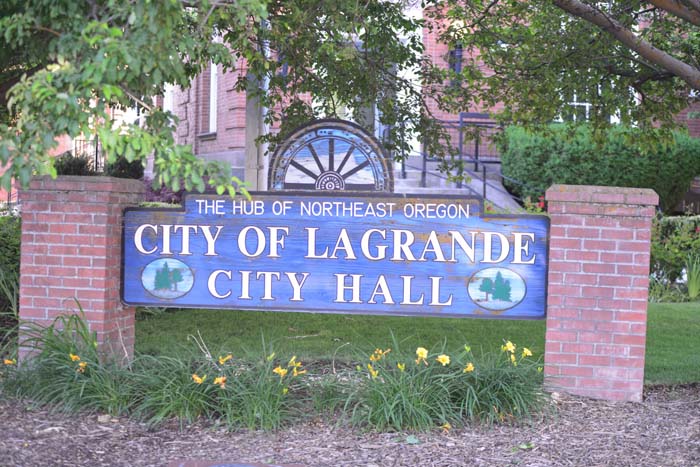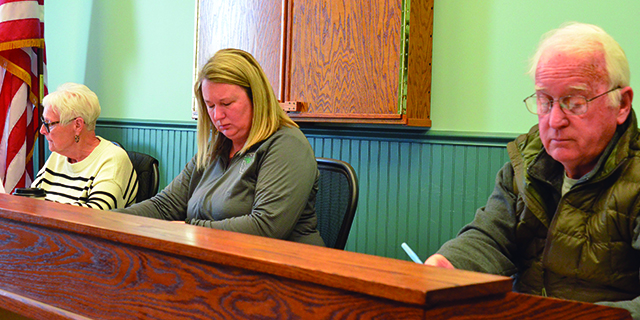Out and about: Braving a bumpy road for a beautiful view
Published 7:00 pm Friday, October 20, 2023

- Jacoby
It is one of my favorite roads and also one I dread. The scenery is fantastic.
The engineering is impressive and the historical legacy palpable.
But the bumps and the jolts.
Incessant.
Kidney abuse.
Driving the road that climbs the eastern slopes of the Elkhorn Mountains to Marble Creek Pass is akin to sitting atop a clothes dryer that you’ve loaded not with damp garments but with boulders the size of human skulls.
That’s the analogy that typically occurs to me, anyway.
(When I’m not feeling especially morbid I might imagine bowling balls in place of the skulls.)
I’ve never actually subjected my dryer to such abuse to see if my comparison is apt or inane.
The boulders would be appropriate in any case.
The Elkhorns, in common with most mountains, are made up mostly of rocks.
And the Marble Creek Road bounces over almost all of them.
The road, however, isn’t as awful as it was for many years.
And by this time in 2024, it’s apt to be quite a lot better.
The U.S. Forest Service, as part of its effort to thin overcrowded forests in Baker City’s watershed and reduce the risk of a wildfire, plans to rebuild about 6 miles of the Marble Creek Road — Forest Road 6510 — next summer.
The agency made much more modest improvements last year.
I noticed the difference the first time I ventured onto the road. For at least the past decade and a half, I paused, at the abandoned lime quarry where the road veers sharply to the left, to shift my Toyota FJ Cruiser into low range.
Beyond that point the road immediately degrades from moderately bumpy to a path more reminiscent of the bed of a mountain stream.
A mountain stream with a steep gradient, at that.
And with a handful of brief intervals, the road remained pretty terrible all the way to the 7,542-foot pass, the lowest gap in the sedimentary wall of Elkhorn Ridge.
The road today is nothing like as smooth as it will be once the Forest Service’s contractor has had a go at it with bulldozers and dump trucks laden with gravel.
But during my most recent ascent, on Oct. 15, I didn’t bother with low range.
First gear in the FJ is sufficiently low that I could creep up the roughest sections with no fear of stalling (it’s a manual transmission, a rarity in our automated era, so deft work with the clutch pedal and accelerator sometimes is necessary).
Snow will soon block the road to most wheeled vehicles — a drift that forms each winter just below the pass sometimes impedes traffic until early July — and it occurred to me that this might be my last drive until the rebuild.
If so it was a fine day to bid farewell to my rocky and rutted old friend.
The sunshine was brilliant and the air much warmer than usual for mid October — 54 even at the pass, where snow can fall in any month (and often does).
Although the yellowing tamaracks are much beloved by autumn photographers, I realized, with something approaching an epiphany, that the lime quarry harbors one of the finest collections of cottonwoods in Baker County.
The trees, some towering 50 feet or so, were close to the peak of their seasonal finery, the yellow leaves all but luminescent against the backdrop of whitish-gray limestone, cobalt sky and dark green conifers.
(The tamaracks, as the colorful exception, are concentrated on the south side of the canyon, opposite the quarry.)
The drive to the summit is still something of a slog, to be sure.
Even after the reconstruction the grades, reaching around 15% in places, will encourage speeds more typical of a walking path than a freeway.
But the trip seemed to me rather less torturous than I had become accustomed to.
(Although it sounded as though my son, Max, went airborne a couple of times in the back seat as we bounced across a water bar.)
With the quarries (one on the Marble Creek side, the other, beyond the pass, along Baboon Creek) long since closed, the road’s main attraction, besides the vista from the pass, is access to the Elkhorn Crest National Recreation Trail.
The pass is the southern terminus for the 24-mile path, which follows the spine of the Elkhorns north to Anthony Lakes.
The trail, built in a few phases from the late 1960s to the early 1980s, is unique among footpaths in Northeastern Oregon.
No other route is both as long and as elevated.
As its name implies, the Crest trail never descends far below the top of the ridgelines it follows. The first mile or so from the pass, although it ascends at a gentle grade, gains about 400 feet of elevation and is the biggest “climb” along the trail.
(At least when hiking north. The 3.3-mile section from the northern trailhead south to Angell Pass gains about 1,300 feet.)
For several miles north of Marble Creek Pass the trail stays on the west side of the crest, so the most extensive views are in that direction and to the south.
On a clear day several major mountains and ranges are laid out as in a diorama — Ironside Mountain, Monument and Table rocks, Strawberry Mountain, Dixie Butte, the Greenhorns, Desolation, Mount Ireland and many others.
A sliver of Phillips Reservoir is visible due south, and to its right, Sumpter Valley’s sinuous piles of dredge tailings are conspicuous.
The trail tempts hikers to continue, promising new vistas with each mile.
It is a popular route to Twin Lakes, the pair of alpine tarns at the head of a glacial valley with the tallest peak in the Elkhorns, 9,106-foot Rock Creek Butte, near to the north, and Elkhorn Peak, the highest summit visible from much of Baker City, just east of the lakes.
My wife, Lisa, Max and I hiked about 2 miles to one of my favorite vantage points. The trail, which was designed by people with a keen eye not only for terrain but for aesthetics, veers to a notch in the ridge where the view suddenly expands to include the sprawl of Baker Valley, more than 4,500 feet below, with the Wallowas dominating the horizon beyond.
We saw a lone mountain goat — a mature billy, I suspect — browsing on a slope below, near the headwaters of Mill Creek.
A few patches of snow, remnants from an early autumn storm, still clung to grottoes on a north-facing slope where sunlight rarely reaches.
I regretted that we couldn’t stay until dusk, when the lights of Haines and Baker City would begin to twinkle.
This saddle is also one of the few places along the trail with enough relatively flat ground to make a decent campsite, so lingering after sunset isn’t implausible.
(Sadly, the fire ring, though properly built, was fouled with scraps of toilet paper which someone apparently couldn’t be bothered to burn or bury.)
Perhaps we’ll return another day with tent and sleeping bags.
But as we hiked back to the pass, basking in sunshine that felt on a bare forearm more like August than October, I recognized the sensation was ephemeral, summer’s final mild exhalation.
Snow will soon dominate the scene, as it does on far more days than not.
The Marble Creek Pass road was built as a haul route for trucks carrying limestone from a quarry at Baboon Creek, on the west (Sumpter) side of the pass, to a lime-processing plant in Baker Valley near the intersection of Wingville Road and Highway 30, about five miles north of Baker City. There were two such quarries, the other being on the Baker side of the Elkhorns, along Marble Creek, hence the name of the pass.
The two quarries, owned by the Chemical Lime Co., produced an estimated $8 million in chemical-grade lime between 1957 and 1971, according to a 1989 report, “Limestone Deposits in Oregon,” from the Oregon Department of Geology and Mineral Industries. The Marble Creek quarry was the first to be mined. It closed in 1963 in part because the limestone deposit was cut by a different type of rock. Chemical Lime then opened the Baboon Creek quarry, which operated from 1963 until 1971, when both the quarry and the processing plant closed. Lower-grade lime from the processing plant is still piled at the site; the bright-white mounds are conspicuous even from the top of Elkhorn Peak, more than 5,500 feet above.
Both quarries tapped deposits of limestone formed from the remains of billions of shellfish that hardened into calcium carbonate at the bottom of a tropical sea about 250 million years ago. The deposits are the biggest in the Elkhorns but only of moderate size for Northeastern Oregon. There are massive outcroppings of limestone in parts of the Wallowa Mountains, including the imposing west face of the Matterhorn, and along the Burnt River, where Ash Grove Cement Co. mines limestone to produce portland cement near Durkee.
The name “Marble” for the creek and the pass refer to the metamorphic form of limestone. Marble is created when limestone, a sedimentary rock, is subject to heat or pressure, or sometimes both, over millions of years. Some of the rock in the Marble Creek area isn’t a true marble, but rather a sort of intermediate stage between limestone and marble.
Mike Upmeyer of Baker City, who died in 2010, told the Herald in 1995 that he drove limestone-laden trucks over the pass in 1970 and 1971. “We just locked up the trailer and let it slide,” he said, referring to places where the grade reaches 15 percent, more than twice as steep as Ladd Canyon on Interstate 84. One driver was killed in October 1968 when his truck plunged off the road.
From the intersection of 10th Street and Pocahontas Road in north Baker City, drive west on Pocahontas toward the Elkhorns. Follow Pocahontas Road for about 7.2 miles. At the end of a straight stretch, where the road veers right, continue straight onto gravel. After about a quarter mile, turn left onto Marble Creek Road (Mill Creek Road continues straight). Stay on Marble Creek Road, which becomes Forest Road 6510. Marble Creek Pass is about 8 miles from the pavement, and almost 4,000 feet higher.





